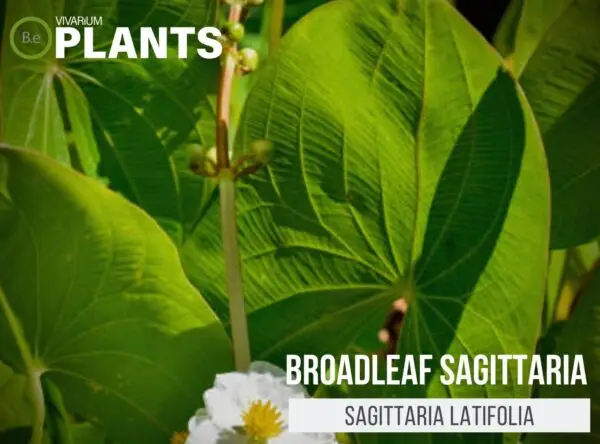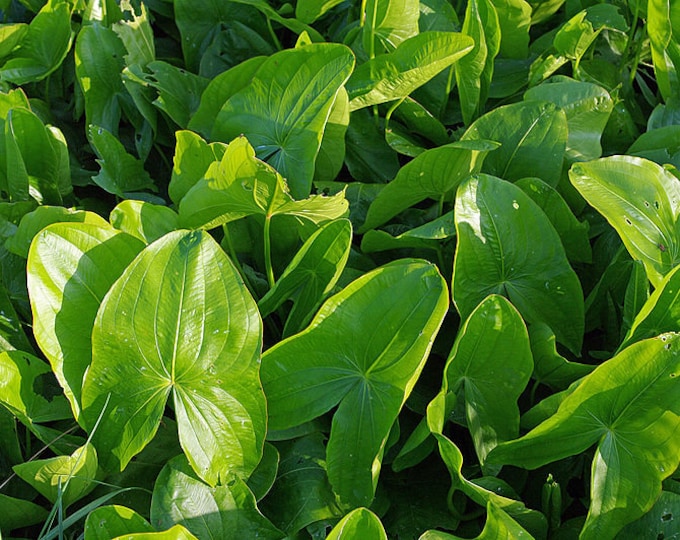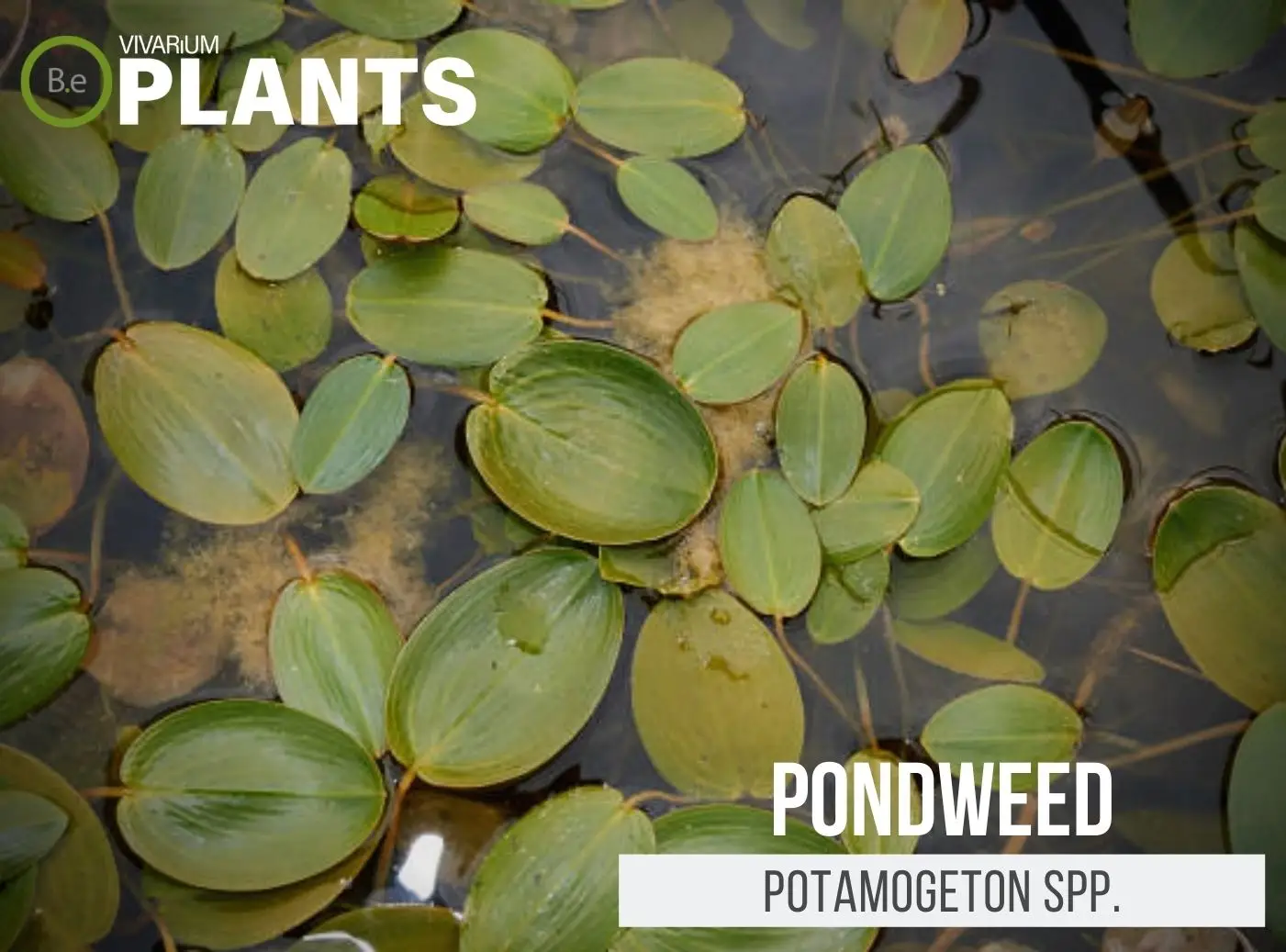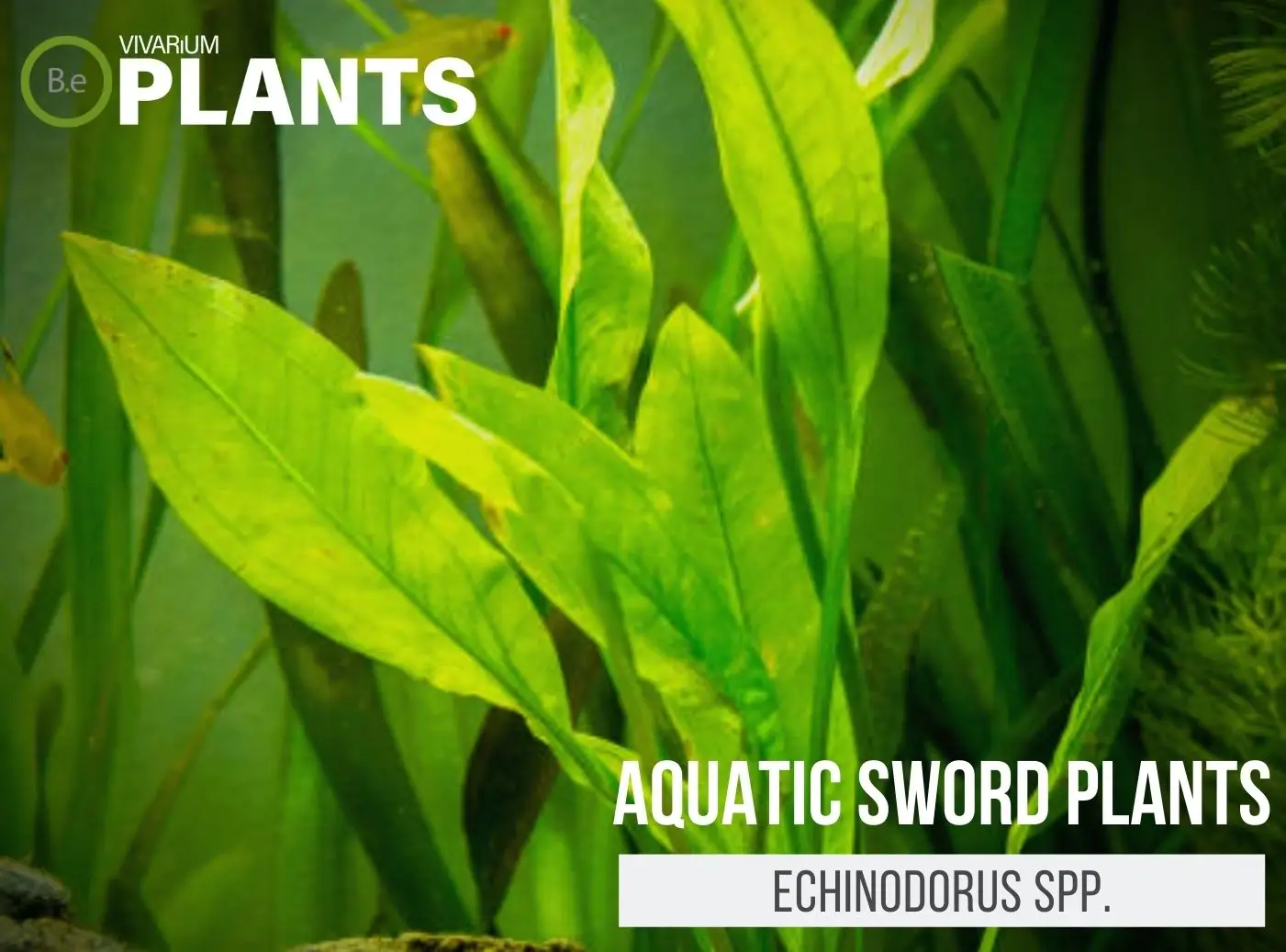Sagittaria latifolia, also known as Duck Potato or Broadleaf Sagittaria, is a beautiful aquatic marginal plant that is great for filling up any type of aquarium. As a rosette plant, its foliage extends outwards and gives off a dense, bushy look that is great for aquascaping purposes.
Many fish will find refuge in the dense bush underneath its leaves, making Sagittaria latifolia a great plant to have when introducing new fish to the aquarium.
It is generally a low-maintenance plant and is great for those that are looking for a unique yet easy-to-care-for accent in the tank.
| Quick Stats: | |
|---|---|
| Scientific Name | Sagittaria latifolia |
| Common Name | Duck Potato, Broadleaf Arrowhead, Broadleaf Sagittaria |
| Family Name | Alismataceae |
| Habitat | Freshwater streams and ponds |
| Temperature | 68°F to 77°F |
| Height | 6 to 18 inches |
| pH | 6.5 to 8.5 |
| Lighting | Medium to bright |
Table Of Contents:
ToggleWhat Is Broadleaf Sagittaria?
Sagittaria latifolia is an aquatic perennial rosette plant found in streams and ponds throughout Central and South America, as well as the southeastern United States.
This plant is often mistaken for the closely-related species, Sagittaria subulata. Sagittaria latifolia produces broad oval-shaped leaves that extend outwards from a central point giving off a bushy appearance.
The leaves of this species are distinctively green with dark stripes running along the center and lobed margins.


Broadleaf Sagittaria Facts
Sagittaria latifolia is also known as the Broadleaf Arrowhead, and the Broadleaf Sagittaria.
It grows in the wild as an emergent plant, extending up to a height of 6 to 18 inches, and can be found either as a single plant or a group of plants.
This species tends to tolerate temperatures and water quality slightly better than its counterpart, Sagittaria subulata.
Description
The leaves of this species typically range between 6 and 12 inches in length and have a distinct arrowhead shape.
They are usually curved with the tip pointing upwards, have a thick leathery texture, and have midrib running along the center of each leaf.
The leaves are bright and vibrant green with streaks of dark green in the center.
Habitat
Sagittaria latifolia is commonly found throughout Central and South America, as well as the southeastern United States.
It thrives in a variety of habitats, including slow-moving streams, river banks, and ponds.
This species prefers relatively clean, still, or slow-moving waters and generally does not do well in heavily polluted waters.
pH Preference
This species of Sagittaria prefers to live in mildly alkaline conditions, with a pH range between 6.5 to 8.5.
This species is usually found in waters with a slightly elevated mineral content, making it ideal for freshwater aquariums.
Vivarium Type
The Sagittaria latifolia is quite an easy-going species. With that in mind, it will not be too complicated when it comes to choosing the type of enclosure it is grown in. It is best to try and replicate the plant’s natural habitat as much as possible.
Doing so will make it easier to provide this marginal plant with its basic needs. The proper setup and theme of the enclosure will make a big difference to the overall look and health of the plant. Be sure to choose setups that are moist and high in humidity.
Here are recommended vivariums it will do well in:
- Paludariums – Half aquatic/ half terrain-based enclosure.
- Ripariums – Mostly aquatic-based enclosures with some terrain features present.
- Aquarium– Fully aquatic-based enclosure with little to no dry terrain.
Vivarium Placement
This species is an ideal addition for those looking for an intricate and unique aquatic centerpiece for their aquariums or ponds.
When placing this plant, it is important to bury the roots in the substrate, leaving only the rosette of foliage above the water.
For maximum display and benefits, it could be planted around the edges of the aquarium or pond and in the center depending on the overall size of the tank or pond.
Substrate
Sagittaria latifolia needs an adequate source of nutrients for it to thrive in the aquarium, so it is important to have a nutrient-rich aquatic substrate.
A mixture of loam, gravel, coarse sand, and organic matter will provide enough nutrients for this species to survive. This plant also prefers acidic soil with higher iron content, so adding some iron-rich soil such as peat moss, is beneficial.
Lighting
This species of Sagittaria prefers medium to low aquatic lighting in the aquarium. It can grow in brighter lighting levels, but this can result in a larger rosette of leaves and a greater chance of deterioration due to the increased water flow.
Buy Broadleaf Sagittaria
When it comes to buying Sagittaria latifolia, there are a few things to keep in mind. Making sure the plant is healthy when purchased is essential for its success in a vivarium or pond.
Vegetation that is already in poor conditions will have a very hard time adjusting to new environments.
Click the image below to find out more about the current price and other relative info about this plant.
Broadleaf Sagittaria Care & Propagation
This species of Sagittaria is relatively easy to care for and maintain. It spreads by sending out long, creeping rhizomes which will quickly make a dense bush with regular pruning and occasional trimming of dead or damaged leaves.
This species is propagated by either dividing the bush or by planting the cut-off rhizomes into the substrate.
How To Grow
It is best to start growing this species of Sagittaria in a shallow tank as it will take longer for the roots to reach the bottom of a deep tank.
This species grows slowly and take care to not overfeed as this will increase algae growth in the tank. Regular pruning of the leaves and rhizomes will help create a fuller, bushier look and encourage the growth of healthier plants.
Water Requirements
Like many aquatic plants, Sagittaria latifolia likes frequent water changes and a medium to high water flow.
This species does not tolerate stagnant waters and does best in a tank where the water is changed frequently. Regular water changes are best for this species of Sagittaria.
Plants Similar To Broadleaf Sagittaria
Adding diversity to an enclosure is key to an aesthetically pleasing setup. Try mixing up the look of your vivarium with different flora that can easily co-exist in the same types of environment.
Furthermore, if for some reason you find the Broadleaf Sagittaria hard to acquire or would like to consider something similar to this aquarium plant… Here are other marginal plants you might find will do well with or in place of Sagittaria latifolia:
Conclusion
Overall, the Sagittaria latifolia is a beautiful and unique plant that is well-suited to many aquariums or ponds. It is both easy to maintain and propagate while providing a beautiful backdrop to any tank.
Because of its broad leaves, this species is great at absorbing pollutants from the tank, creating a cleaner environment for any inhabitants.
When cared for and kept under the right conditions, this species will surely be a great addition to any type of aquarium.
Frequently Asked Questions
Yes, the broadleaf arrowhead (Sagittaria latifolia) is an invasive aquatic plant. It has been introduced to many parts of the world and can spread quickly, outcompeting native plants, and leading to ecosystem degradation.
Yes, duck potato (Sagittaria latifolia) is edible. It can be eaten raw or cooked and is often used as a starch alternative in soups and stews. It can also be ground into flour for baking.
You can find broadleaf Arrowheads in wet or marshy areas, such as ponds, ditches, and wetlands. It is also sometimes found in streams and rivers.
Yes, you can touch an arrowhead plant. However, it is important to be gentle when handling the plant and not to damage any of its delicate leaves.
Yes, arrowhead plants like to be misted because they come from humid tropical climates and need regular moisture in order to stay healthy.
To make an arrowhead plant fuller, trim off the tips of the stems and shape the plant to create an aesthetically pleasing shape.




